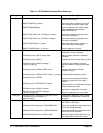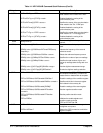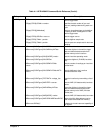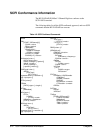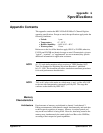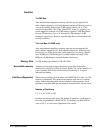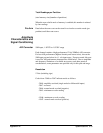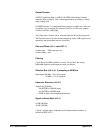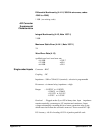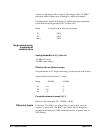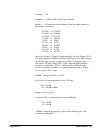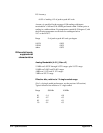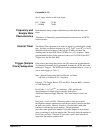
Read-Out
To VME Bus
After measurement completion, memory read-out may be requested for
either channel separately or for both channels interleaved. Memory access is
via repeated reading from a single VME register address; 16- or 32-bit
accesses are permitted. This is the "channel I/O" model; i.e. memory can
not be mapped or shared as can VME memory. Speed to VME Bus should
be up to 2M transfers/s (16- or 32-bit transfers, 2M readings/s or 4M
readings/s respectively); however, rates this high have not been tested with
existing controllers.
To Local Bus (E1429B only)
After measurement completion, memory read-out may be requested for
either channel separately or for both channels interleaved. (Data may also
be routed to Local Bus in real-time, while digitizing is occurring.) Speed is
up to 40 MBytes/s (20 Mreadings/s) for either channel separately, or 80
MBytes/s (40 Mreadings/s) for both channels interleaved.
Memory Size 524,288 readings per channel (512K, 1K=1024)
Nonvolatile memory A battery and associated support functions are provided to make the
memory non-volatile for 4 years (nominal). Battery life can be extended to 7
years (nominal) shelf life by electronically disconnecting it. A register
indicates low battery.
Partitions (Segments) When pre-arm readings are to be taken, and ARM:COUNt is from 1 to 128,
memory is partitioned. This permits each partition to be used as a circular
buffer, without disturbing data already recorded in other partitions. Each
partition records data (both pre-arm and post-arm data) from one arm event.
Number of Partitions
1, 2, 4, 8, 16, 32, 64, or 128
Partitions are always equal-sized. The number of partitions is sufficient for
the value programmed for ARM:COUNt. For example, an ARM:COUNt
value of 5,6,7, or 8 will cause 8 partitions to be created.
318 Specifications Appendix A



